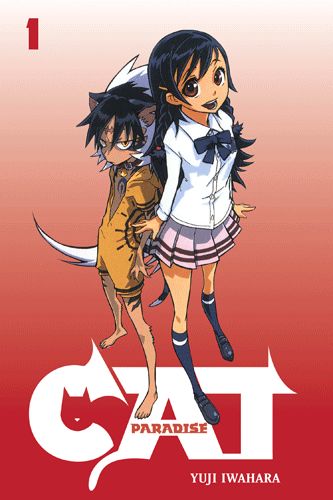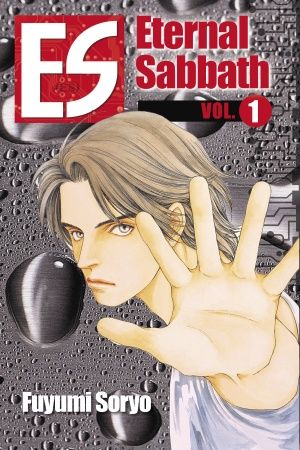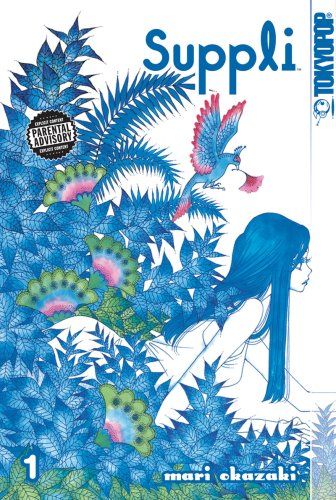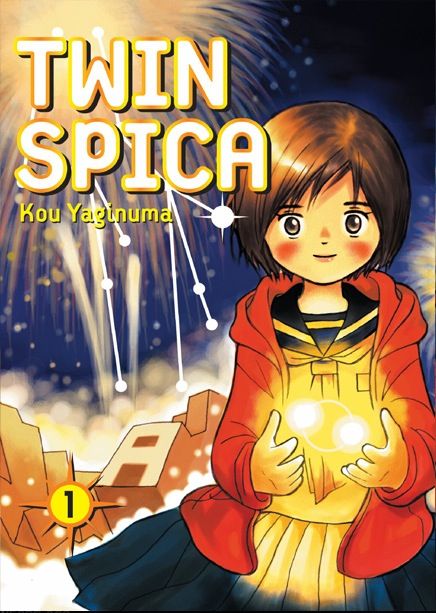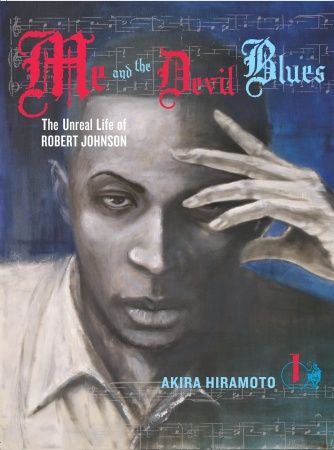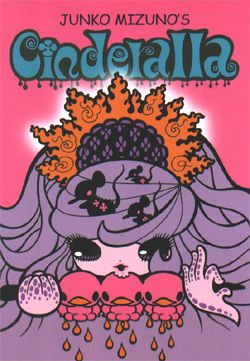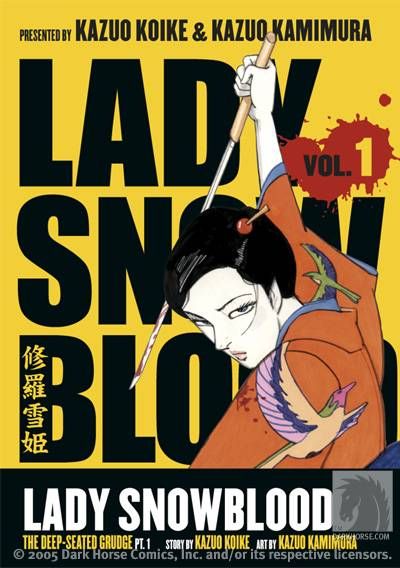I didn't just go to the American Library Association to gawk; I was also on three panels, one of which was titled "The Best Manga You're Not Reading," moderated by graphic novel expert Martha Cornog.
Here are my four selections, plus a mulligan (because you always think of the best one as soon as you send the list in), and I'm including Martha's choices as well. I expect my fellow panelists, Kate Dacey and Robin Brenner, to post on this shortly, but I'll include their selections as well for the curious. Feel free to add your own nominations for underappreciated manga in the comments — there's always another panel!
Cat Paradise, by Yuji Iwahara (the creator of Chikyu Misaki, arguably the greatest children's manga ever), is a pleasant combination of cuteness, fantasy, and action, all set at a boarding school where students are allowed to keep cats as pets. Nothing is ever as it seems, of course: A small group of the students and cats are warriors with special powers, and they are fighting on the side of the beautiful princess Kiri and her cat Shirayuki against an evil demon cat, Kaen, and his minions.
The heroine, Yumi, is your typical shoujo manga girl, nice but not very remarkable. She loves her cat Kansuke, whom she rescued from being crushed by a car, but she drives him crazy because she knits little outfits and makes him wear them. When they get their powers, it turns out that her power comes in the form of a ball of wool, and when she knits Kansuke an outfit, he transforms into a human and can go into battle.
The series combines an imaginative premise—what if you could talk to your pet?—with some serious fight sequences and the usual romantic complications. The plot moves along quickly, the characters are likeable, and Iwahara's art is cute without being cloying. It's a natural for shoujo manga fans, but it should be a fun read for others as well; the characters and situations are universal, and the art is clear and accessible even to readers who don't read a lot of manga.
ES: Eternal Sabbath is a science fiction manga about an experiment in which a special gene is inserted into subjects to bring immortality. It also has a side effect, which is to allow them to enter people's minds, see their thoughts, and change their behavior.
In some ways this is a standard science fiction story, but the art in the early volumes is what really sets it apart. Rysosuke, the hero, experiences other people's minds as a separate physical space; as he stands and looks, these incredible surrealistic scenarios unfold that show him the person's memories and their hidden emotions. He can also induce hallucinations in others. This is the sort of thing that comics can depict very well, and creator Fumiyo Soryo uses the full power of the medium to draw the reader in. Even in more "normal" sequences, her clear, deadpan style gives the series a surrealistic feeling, making this manga a pleasantly creepy read.
Suppli is a workplace comedy about a young woman dealing with the anxiety of nearing 30 with no marriage prospects and an all-consuming job. It's a fast-paced, funny romance that touches on a lot of universal themes—sex, love, balancing work and personal life, choosing between friends and lovers.
The series starts with 28-year-old Fuji breaking up with her boyfriend after a fight over how much time she spends at work. She responds by throwing herself into her job, and at the same time, a whole new world expands as she starts socializing with her co-workers. She quickly gets involved in a love triangle, attracting the attention of both the sweet underachiever who's more a friend than a lover and a dashing executive, above her on the corporate ladder, who swoops in for some intensely emotional scenes and then vanishes, partly because he's having an affair with a married woman. A host of other people either get involved or sit around voicing their opinions, and since they all work in Fuji's company, they are constantly bumping into one another.
Fuji is very serious about her job, but she must contend with a corporate culture that is very top-down, conformist, and sexist; every idea she comes up with ends up getting shot down in favor of something more "normal." Creator Mari Okazaki parodies the excesses of Japanese culture (there's one co-worker who never leaves his sleeping bag) but much of the humor and drama in this book is universal, making it a good choice for adult readers in search of a smart, witty read.
Twin Spica is a teen-friendly story of a girl who wants to be an astronaut. The book follows the heroine, Asumi, through her training course and her career, but the first volume also fills in her backstory and shows us what a determined girl she is. Japan began its space program about 10 years before the series started, but it ended with a rocket exploding in mid-air and killing numerous bystanders. Asumi's mother was gravely wounded in the accident and spent several years in the hospital before she finally died; Asumi, who was a young child at the time, only saw her mother swathed in bandages and never saw her face. When her mother dies, Asumi refuses to go along with what the grownups want and instead finds her own way to come to terms with her mother's death. That determination sets her apart from the standard manga heroine and makes her interesting to follow. Her mentor is a lion-headed ghost, and he too has a poignant backstory. This manga is filled with quirky but human characters, and the art is detailed enough to create a whole world without being overwhelming. It's definitely a teen story but I think it has a lot to offer adults as well.
The Mulligan
Me and the Devil Blues is the story of bluesman Robert Johnson, who sells his soul to the devil at the crossroads at midnight in order to become the greatest musician who ever played the blues. The first volume plays this story more or less straight, with a supporting cast of real blues musicians, but the second volume brings in a baroque twist when Johnson meets up with bank robber Clyde Barrow and they hit the road together. The art is unusual and very effective in places (although a lot of the period work is obviously drawn from photos), and the two volumes make a good read. Unfortunately, it has been a while since volume 2 was released and it's not clear when, or if, volume 3 will be on the way. Even incomplete, though, this is a manga well worth having.
Martha Cornog's Picks
(Warning: Spoilers!)
Junko Mizuno’s Cinderalla, by Junko Mizuno
Zombies are hot, now, right? Junko Minzuno was way ahead of the zombie curve when she did this in 1995. But these are zombies like you’ve never seen them before. Mizuno’s trademark style is a unique blend of
cute, creepy, satiric, and sexy. Her art has been compared to “My Little Pony,” but it’s more psychedelic and way more original. Cinderalla is quite a bit like the classic fairytale of Cinderella,
but quite a bit different, also.
This Cinderalla works for her divorced father in his yakitori restaurant—yakitori are skewers of grilled chicken. She’s very happy until her beloved father dies—and comes back as a zombie! Okay, Cinderalla can live with that, even if he goes back to the cemetery during the day to sleep. But then he takes a zombie bride and brings her home with her two zombie daughters, who are now Cinderalla's stepsisters. The three of them give our girl a very hard time. Not only does Cinderalla have to do all the restaurant work and cook for the whole family but she has to make clothes for the vain, boy-crazy zombie stepsisters. (These zombies are cute, not ugly, and they’re always hungry.)
Then the word is out that the Prince is having a show. This prince is a zombie, and he’s a famous pop singer. (Prince—singer—get it?) So Cinderalla gets stars and hearts in her eyes and wants to go to his show. She manages to earn the money for a ticket and gets very prettily dressed up. But when she gets there as the first in line, she finds out that only zombies can get in. Cinderalla says, “I wish I were dead.” But how can she manage that without killing herself?
It turns out that our girl had rescued a fairy who was mistreated by a couple of neighborhood kids, and the fairy is all too happy to turn Cinderalla into a zombie for a night--especially after a few rounds of sake . Cinderalla is every bit as cute as a zombie as she was as a live person, so she goes to the show, spends the night with the Prince, and naturally he wants to marry her. But ooops! She has to run off at dawn, and she drops something. It’s NOT a slipper! She’s a zombie! Zombies have—shall we say—loosely attached body parts. Cinderalla drops an eyeball.
Kind of creepy, right? But that’s part of the charm of this manga. It’s not as gruesome as it sounds. It’s cute, funny, and a bit sexy since we see Cinderalla and other characters topless or nude in a cartoony way. Like when she spends the night with the Prince, they’re in bed, naked, in a big romantic embrace.
Of course at the end, the Prince does track Cinderalla down, they get married, and everybody—including the zombie stepsisters—lives happily ever after.
Lady Snowblood, by Kazuo Koike & Kazuo Kamimura
This heroine is definitely NOT cute.
We first meet Yuki—Lady Snowblood—when she’s hired by a yakuza gangster to assassinate the head of a rival prostitution and gambling operation. She comes to the rival's gambling place when he’s present, and clumsily fakes a rigged toss of the dice. He and his men see through her obvious trick, and they strip her and then drag her out into the snow to rape and kill her. But with Houdini-like skill, she maneuvers out of her bonds, grabs her long knife, and finishes them all off, stark naked. Now THAT’s snowblood. Real snow, real blood.
Kazuo Koike is the writer from Lone Wolf and Cub, and this is similar but with a woman assassin. And it’s set 200 years later, in 1890s Meiji Japan. Little Yuki was born as a prisoner’s baby. The prisoner, her mother, is locked up with a life sentence for killing one of the four conspirators who raped her and murdered her husband and little boy—who would have been Yuki's brother. Three of the conspirators are left alive, and so Yuki’s mother seduced priests and prison guards just to conceive another child who would finish out her revenge.
That’s a nasty fate for a little kid. But as Yuki grows up, she trains hard and is more than up to the task. Her weapons include a sword hidden in her pretty parasol, a knife hidden in a hair ornament, finely honed pickpocket and martial arts skills, and her body. She’s drop dead gorgeous, and when she drops her clothes, men drop their guard real quick.
Like Ogami Itto in Lone Wolf and Cub, she takes gigs as a hit-woman while tracking down her mother’s enemies. So we have three intertwined tales: Yuki’s backstory about her upbringing and training, her hit-woman jobs, and her quest to revenge her mother.
But Yuki and her opponents aren’t cookie-cutter characters. As in Lone Wolf and Cub, everyone including the villains all have complex lives and motivations. And Yuki herself can feel pity for her victims and sometimes accommodates them in some way.
All throughout, there’s lots of athletic action, blood, and gritty sex—this is definitely for adults. The art is very attractive and cinematic, with excellent graphic storytelling.
It’s reported that Quentin Tarantino used Lady Snowblood as his inspiration for Kill Bill. If he had just adapted the Lady Snowblood story, I would have liked it a lot better!
Robin Brenner and Kate Dacey
Robin and Kate plan to post their notes at their own blogs, so I'm just going to add their lists here.
Robin's picks
Kate's Picks (Kate posted her notes at her blog, The Manga Critic)


